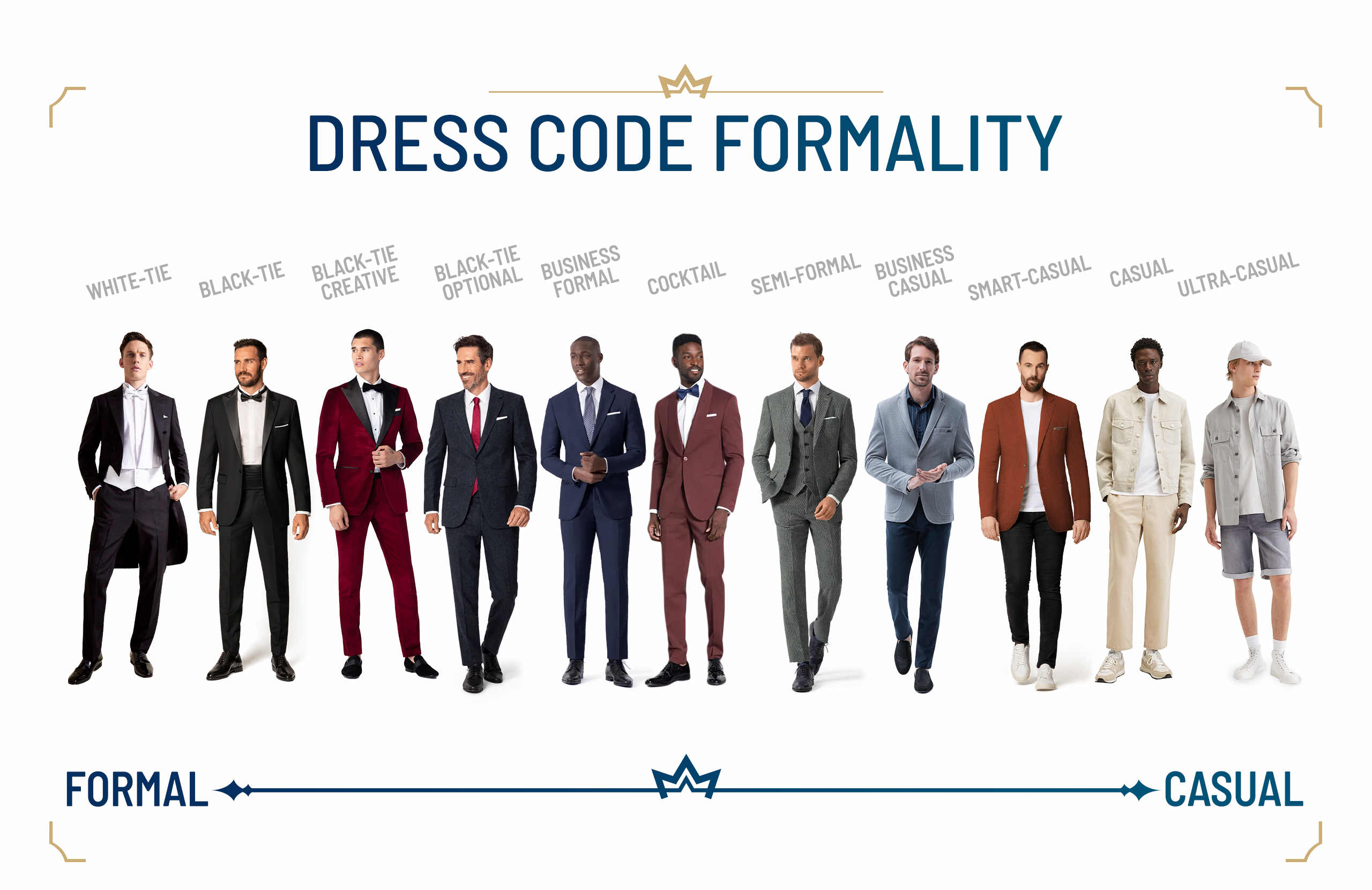In the age of casual flings and impersonal digital communication, the idea of a true gentleman may seem like a dying breed.
Yet, the time-honored principles of gentleman’s etiquette never go out of style.
They resonate with grace, respect, and, most importantly, good manners.
A man of good etiquette is not just a man of affable demeanor but also a beacon of respect for those around him.
So let’s roll up our sleeves and dive into the beautiful world of gentlemanly behavior, where chivalry is not dead but alive and thriving.
Basic Etiquette is Different from Manners
Etiquette and manners are two terms often used interchangeably, yet they carry distinct connotations.
Manners are the broad, overarching principles that guide our everyday interactions, such as treating others with kindness, showing respect, and being considerate.
On the other hand, etiquette is the specific set of rules, the special codes that govern behavior in particular situations.
Consider this – eating with a closed mouth is good manners. But knowing how to navigate a formal dinner setting, such as which fork to use for each course, is etiquette.
Being courteous and polite illustrates proper manners. But waiting for everyone to get their food before starting to eat is an example of good etiquette.
Both manners and etiquette are essential components of a gentleman’s repertoire, yet they serve different purposes.
Manners are the foundation on which a gentleman builds his character, while etiquette adds finesse to his interactions.
Therefore, it’s crucial for a modern gentleman to understand and distinguish between the two, using them appropriately to create a lasting good impression.
History of Gentleman’s Etiquette
Gentleman’s etiquette has a rich and varied history, rooted in a time when chivalry and courtly manners were the order of the day.
The concept of a “gentleman” originated from the British aristocracy, a term used to describe a man of noble birth, reflecting a certain social status.

Over time, however, the term evolved to represent a man of honor, respect, and good behavior, far beyond just his lineage.
From the Victorian era’s strict protocols to the more relaxed standards of the modern day, the gentleman’s code has seen significant evolution.
Yet, the core principles remain unchanged – respect for others, kindness, and courtesy.
In the 19th century, a gentleman would never dream of not tipping his hat to a lady or failing to open doors for her, displays of gentlemanly behavior that are still appreciated today.
Recently, being a gentleman has gone beyond these outward displays of respect.
A gentleman in the 21st century understands the importance of equality and respect in all walks of life.
He does not merely abide by old traditions.
Still, he adapts to the changing social norms, always treating others with the utmost respect and kindness, whether on a first date, in the boardroom, or at a casual gathering.
As the world evolves, so does the definition of a gentleman, merging the traditional charm of the past with the forward-thinking attitudes of the present.
Deciphering the Different Occasions & Settings
Different occasions have different dress codes that reflect the nature and formality of the event, whether in terms of attire or behavior.

So, navigating these different social, professional, and personal settings as a gentleman requires understanding the specific etiquettes that apply to each dress code.
This means that while careful attention to attire for different settings is important, so too is the manner in which one conducts oneself.
And knowing when to apply which etiquette rules shows respect and awareness of your surroundings, making a significant difference in how others perceive you.
As the old saying goes, “A gentleman is not defined by the content of his wallet or the cut of his suit, but by his manners and the content of his character.”
Now that we understood the basics, let’s start exploring the list:
Gentleman Etiquette in Style and Fashion
Tom Ford, a world-renowned fashion designer, once said, “Dressing well is a form of good manners.”
This statement encapsulates the essence of a gentleman’s etiquette in style and fashion.
How you present yourself to the world can tell a lot about your personality and attitudes, and a gentleman understands this. So here goes the first tip:
1. A gentleman should always dress appropriately for the setting.
Proper attire helps you look good and make a good first impression.
And while suits and tuxedos go a long way in gentleman’s attire, there are some key differences between these two garments.
For instance, for black tie events, you should opt for a dinner suit/tuxedo. For business meetings, a conservative, dark-colored suit is appropriate.
And, more casual occasions call for a lighter color or patterned suit.
It still means learning how to wear a suit properly and understanding the basics of formal attire:
2. Always wear well-fitted suits. A proper suit fit makes or breaks your appearance.
3. A quarter-inch of shirt cuff should be visible when wearing a suit.
4. Cut the tacking stitches off your suit.
5. Unbutton the suit when sitting. Button it up when standing.
6. Take care of your clothing. Clothes should be clean, well-fitted, and in good condition.
This shows respect for yourself and those around you. Your footwear should also be clean, polished, and free of visible damage or wear.
7. Be mindful of cologne. Few sprays of cologne are enough.
Cologne is a great way to invite people close to you. But using too much can be repulsing to people.
8. A gentleman knows that accessories can elevate an outfit but should be used sparingly.
A classic wristwatch, for instance, adds a touch of elegance without being ostentatious.
9. A gentleman never neglects his grooming.
Clean, well-managed hair and a fresh shave or neatly trimmed beard go a long way in creating a positive impression.
Gentleman Etiquette in Social Situations
In social situations, a gentleman’s behavior stands as a testament to his character.
Being engrossed in your newspaper or phone is no excuse.
A gentleman always strives to make others feel comfortable and valued. And this leads us to these golden rules:
10. If you’re sitting in a priority seat and don’t need to be, vacate it promptly.
11. Always hold the door open for anyone just behind you.
But be mindful not to create an awkward situation by holding it when they’re too far off.
12. Never look at your phone in dimly lit public spaces such as a cinema or exhibition. It’s distracting and disrespectful.
13. Keep your conversations private.
It means avoiding speaking loudly on the phone in public places.
14. Be mindful of personal space.
Remember, the world is not a stage for your personal drama. A gentleman knows how to keep his feelings in check:
15. Keep your temper in check. Public displays of anger reflect poorly on your character.
Gentleman Etiquette in Professional Settings
In a professional setting, a gentleman knows how to blend competence with proper etiquette.
Making a positive impression isn’t merely about your work skills but also about how you interact with your colleagues and clients.
16. Always arrive on time for meetings.
This shows respect for other people’s time and commitments.
17. Listen attentively during discussions, maintaining eye contact to show your full attention and interest.
18. Be respectful in your communications, whether in person, on the phone, or via digital means. A quick “please” and “thank you” can go a long way.
19. Avoid gossiping or speaking negatively about colleagues.
A gentleman respects everyone’s dignity and privacy.
20. And most importantly, do no harm.
Attire is also an important segment of a well-mannered and professional gentleman. Remember to adhere to a more formal business dress code if the situation requires so.
21. Dress appropriately for your workplace. This shows respect for the organization and its norms.
Dining Etiquette for a Gentleman
Whether it’s a casual lunch or a formal dinner, a gentleman knows that dining offers a platform to exhibit his good manners and etiquette.
The principles of dressing accordingly extend to dining etiquette as well.
As the saying goes, “The dinner table is a stage, and your behavior is the performance.”
So, just as you’d wear the right outfit for the occasion, you’ll want to showcase the right manners at the dinner table.
But other table manners also speak volumes about your sophistication and understanding of social norms.
Here are some essential pointers to keep in mind:
22. Be courteous to everyone, from your dining companions to the restaurant staff.
23. Keep technology off the table.
It’s not just about silencing your phone but also about giving your full attention to the people and the meal before you.
24. Personal items like wallets, keys, or sunglasses have no place on the dining table.
25. Don’t hesitate to ask for advice on the menu or wine list. It shows that you are open-minded and willing to learn.
26. If you are offered to taste the wine, it’s not merely about your preference. It’s a ritual that shows respect to the host.
27. Be subtle with your table manners. Chew with your mouth closed, use your napkin, and adhere to the basics.
28. Never interrupt others while speaking. Listening is a gentleman’s virtue that represents respect and interest.
Gentleman Etiquette in Romantic Relationships
Romantic relationships offer unique opportunities to display gentlemanly behavior.
Whether it’s a first date or a long-term relationship, a gentleman knows how to make his partner feel valued and respected.
29. Respect should be the foundation of every action. Always treat your partner as an equal.
30. Communication is key. Be open, honest, and considerate in your conversations.
31. Small gestures can make a big difference. Holding doors open, pulling out a chair, or a simple compliment can go a long way.
32. Understand and respect boundaries. Everyone has comfort zones, and a gentleman knows not to cross them.
And be punctual. Making someone wait for you unnecessarily is a sign of disrespect.
Digital Etiquette for the Modern Gentleman
In today’s digital age, etiquette extends beyond physical interactions.
A modern gentleman understands the importance of maintaining proper decorum even in virtual spaces.
33. Be mindful of what you share online. Remember that digital footprints are nearly permanent.
34. Respect privacy. Don’t share someone else’s photos or information without their consent.
35. The tone can be hard to convey in written communication. Be clear and considerate in your messages.
Avoid using digital platforms to vent frustrations or engage in arguments. Keep your online interactions positive and respectful.
Remember that, online or offline, the basic principles of respect, consideration, and honesty remain the same. Being a gentleman is not confined to specific situations but is a way of life.





